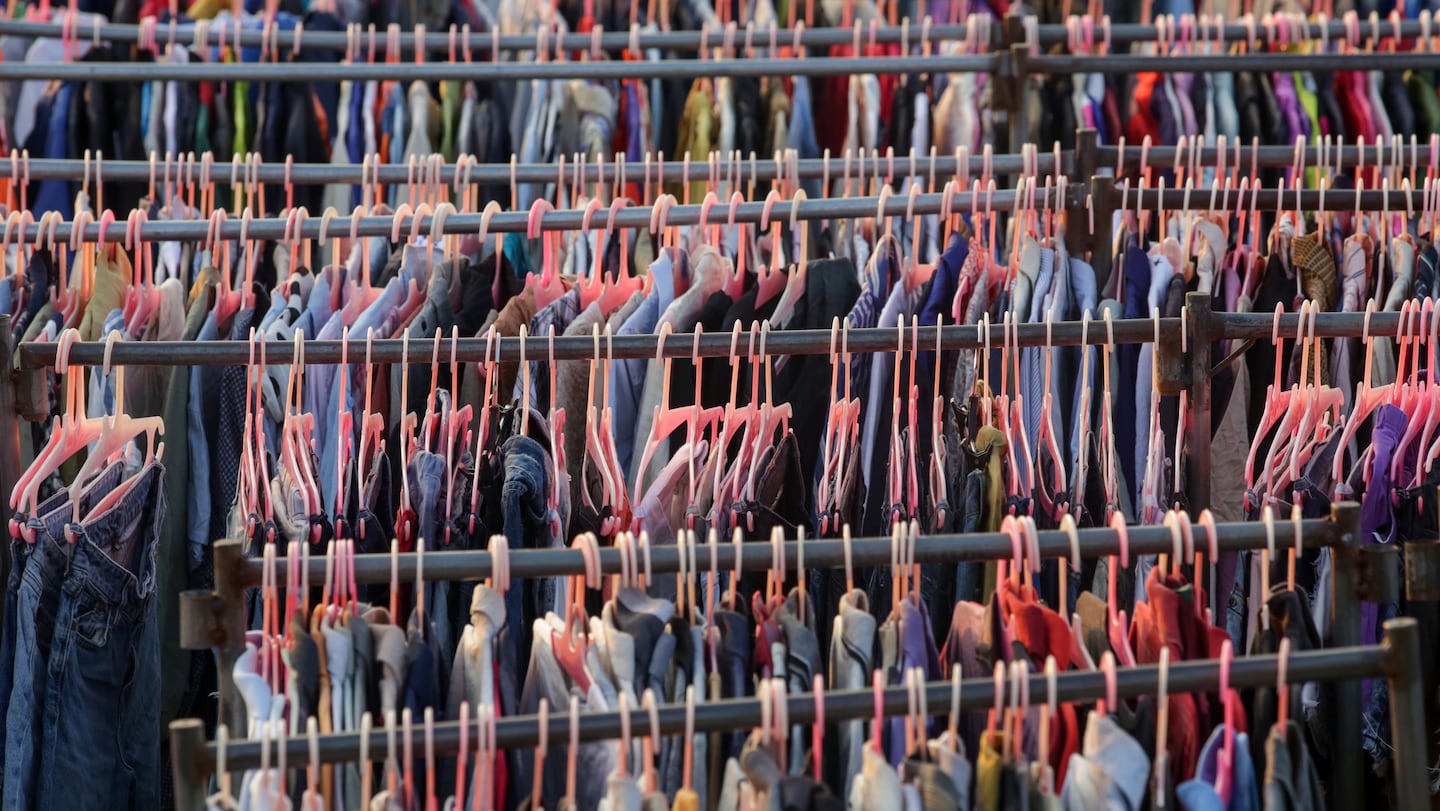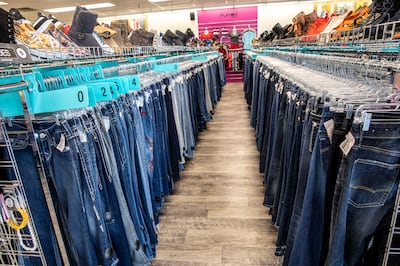
The Business of Fashion
Agenda-setting intelligence, analysis and advice for the global fashion community.

Agenda-setting intelligence, analysis and advice for the global fashion community.

Peer-to-peer resale app Depop has become a hot destination for Gen-Z consumers on the hunt for cute, reasonably priced pre-loved finds. But some have been disappointed to discover their latest “retro” or “vintage” buy actually came from Shein.
“Sadly this is so common,” one user wrote in the Reddit forum devoted to Depop. “They always just say ‘unbranded’ or ‘no brand.’”
Depop said misleading listings are against its terms of service and buyers in these cases are entitled for a refund. But whether or not it’s falsely marketed, the explosion of fast fashion over the last two decades has meant the secondhand market is awash with polyester party dresses and synthetic sweaters.
On Poshmark and eBay, there are thousands of pre-owned Zara and Asos pieces for sale. Winmark Corporation, the company that owns the value-driven thrift chain Plato’s Closet and other brick-and-mortar secondhand chains, said it buys and sells more than 100,000 fast-fashion items from brands including Shein and H&M every week across its 1,300 locations in North America. Big brands, under pressure from regulators looking to crack down on clothing waste, are launching their own resale portals too.
ADVERTISEMENT
The growth of the secondhand market has been promoted as a positive step towards creating a more sustainable fashion industry, helping to keep clothes in circulation for longer and diverting them from landfill — currently the final destination for most fast fashion. But the reality is complicated.
The economics of fast fashion in resale are challenging. Online, margins for $5 tops and $15 jeans are slim to negative after incorporating shipping and listing costs, which means some companies have made it less attractive for sellers to list such items with them. Meanwhile, whether the sector’s growth is making a difference to fashion’s overall environmental impact is murky at best. So far, pre-owned fast fashion has hardly made a dent in primary sales or overall production, raising questions around whether it is a solution or just a symptom of the problem.
“It’s not as simple as ‘don’t buy it,’ nor as simple as ‘just donate it,’” said Danielle Vermeer, former product lead for Amazon Fashion’s resale initiatives and chief executive of Teleport, a resale app that allows users to buy and sell directly from outfit videos. “The reality is that fast fashion isn’t going anywhere.”
Despite the influx of fast fashion on resale sites like Poshmark and eBay, these listings hardly make money for the sellers and the platforms that house them.
Resale giant ThredUp, which allows users to send in heaps of pre-owned clothing and helps them sell a portion of this load, has updated its payout policy to exclude low-value brands like Shein, Old Navy and Missguided. Sellers can still include pieces made by these brands in their “cleanout kits” and ThredUp might still sell them on its site, but the original owner just won’t receive any compensation for it.
The move reflects how hard it is to profitably scale an online business reselling fast fashion. That’s because there is a cost to sort through, photograph, list and store each individual piece of secondhand clothing, and that cost is the same for a $3,000 handbag as it is for $30 pants. As a result, large digital resale companies like ThredUp and Poshmark have struggled to operate in the black.
Hundreds of brands including fast-fashion players like Asos and Shein have launched their own peer-to-peer resale portals, which are less cost-intensive to operate. When shoppers opt to sell their pre-owned pieces on these channels, the brands often offer discount codes or vouchers for new retail purchases, essentially turning secondhand sales into a marketing tool that can feed their primary business.
To be sure, there are businesses operating profitably in the space — namely, those that sell through brick-and-mortar storefronts. Winmark posted $39.4 million in net income last year on revenue of $81.4 million. That’s compared to ThredUp’s net loss of $92.3 million in 2022 on total revenue of $288.4 million. ThredUp declined to comment.
ADVERTISEMENT

“There’s a very liquid market for previously used Shein items,” said Brett Heffes, Winmark’s CEO. “We have a mechanism to buy and sell low-dollar items. If the world doesn’t have us … most of that stuff gets tossed.”
But even if shoppers find a way to get paid for and prolong the life of some pre-owned fast-fashion items, most pieces inevitably end up in a landfill. Where retailers don’t think they can sell an item at a profit they typically flog them on the aftermarket. Few options exist to recycle polyester and mixed-fibre garments, and pieces that can’t be sold often end up destroyed, downcycled or dumped, even when brands claim to be disposing of them responsibly.
In November, luxury resale site Vestiaire Collective banned ultra-fast fashion brands like Boohoo and Asos from its platform.
The company said the headline-generating move was philosophical rather than financial, designed to distance the business from wasteful habits of over-consumption and promote high quality, long-lasting products to customers.
“We want to really try to figure out a new way of talking to someone who is searching for Shein or trying to list an item, and how to give them a solution,” said Dounia Wone, chief impact officer at Vestiaire Collective.
Critics pointed to the fact the move reduced access to an avenue that could prevent clothes going to waste. To counteract the potential effects of blocking fast-fashion listings, Vestiaire said it’s looking to better communicate with and educate its shoppers on how to donate items as well as how to mend or repair them. The idea is that, “when you buy firsthand Zara, maybe you can afford a better brand on a secondhand platform,” said Wone.
The debate points to a fundamental tension over whether resale can help address fashion’s waste problem or whether it’s simply enabling more consumption.
Sustainability advocates and resale experts alike argue that unless a secondhand programme results in a reduction in the manufacturing of new products, which contribute the majority of emissions in a company’s supply chain, resale won’t have a material impact.
ADVERTISEMENT
“The biggest impact of resale should be on the bottom line,” said Jake Disraeli, founder and CEO of Treet, the resale technology provider behind Shein’s secondhand portal, Shein Exchange. “[Fast-fashion brands] will have to prove that resale displaced production of a new item.”
According to Shein, its resale channel now has more than one million registered users and will expand to other markets later this year.
So far, few companies have built businesses meaningful enough to show up as a line item on their balance sheets.
Some of the most exciting developments in fashion resale are happening in real life on a hyperlocal scale, according to Vermeer, pointing to on-campus college thrift stores that receive donations and even give payouts to sellers.
“There’s no online store, and it’s by the community for the community,” she said. “And they’re in the same life cohort so I think it’s an interesting model.”
Kate Lindello, founder of Noihsaf Bazaar, a peer-to-peer resale site with an emphasis on independent designers, suggested thrifters can get creative with their own networks, organising clothing swaps at bars and restaurants. Clothing exchanges or low-value trades make the most sense for fast-fashion pieces because they don’t command high resale values anyway, and being in-person takes the risk out of buying the wrong size or failing to notice a blemish. Noihsaf, in fact, began as a free clothing swap service on Instagram. Such networks still exist on Facebook, Instagram and elsewhere on the internet.
Ultimately, while affordable secondhand channels offer an alternative to fast fashion, they cannot be the only solution. Among resale stakeholders, there is resounding consensus that regulation is needed to curb fashion’s carbon footprint and waste problem. Earlier this month, the European Union introduced a proposal that would charge clothing companies for the costs incurred in the waste management process of their products. Similar laws are already in place in France and Spain. The California state legislature, meanwhile, has introduced a bill that would require clothing manufacturers to enact a reuse and recycle plan to divert textile waste.
“Resale is providing an entry point for consumers to hopefully choose something that already exists rather than buying new,” said Lindello. “Do I think it’ll demolish the fast fashion industry? I don’t think so unless we set higher standards for these companies.”
 Opens in new window
Opens in new windowUltra-fast fashion e-tailer PrettyLittleThing is the latest brand to launch a secondhand marketplace, playing into a debate over whether resale is becoming a smokescreen for even more and faster consumption.
The companies cashing in on fashion’s fast-growing resale market are positioning themselves as a solution to the industry’s sustainability problems. But the reality is far more complex.
BoF’s definitive guide to fashion resale, covering the evolution of the market, its growth and upside, consumer behaviours and recommendations for crafting a data-driven resale strategy.

Cathaleen Chen is Retail Correspondent at The Business of Fashion. She is based in New York and drives BoF’s coverage of the retail and direct-to-consumer sectors.
Europe’s Parliament has signed off rules that will make brands more accountable for what happens in their supply chains, ban products made with forced labour and set new environmental standards for the design and disposal of products.
Fashion’s biggest sustainable cotton certifier said it found no evidence of non-compliance at farms covered by its standard, but acknowledged weaknesses in its monitoring approach.
As they move to protect their intellectual property, big brands are coming into conflict with a growing class of up-and-coming designers working with refashioned designer gear.
The industry needs to ditch its reliance on fossil-fuel-based materials like polyester in order to meet climate targets, according to a new report from Textile Exchange.